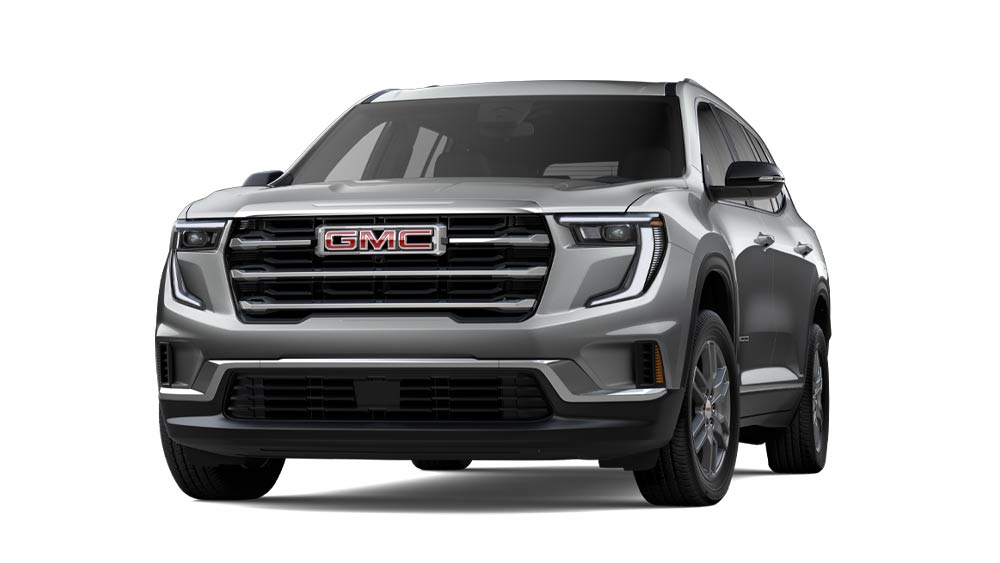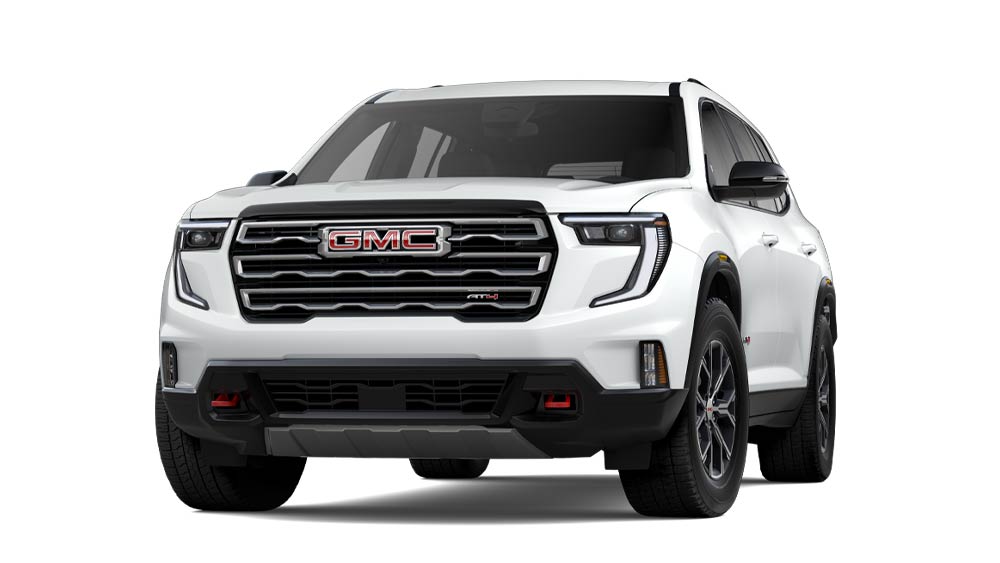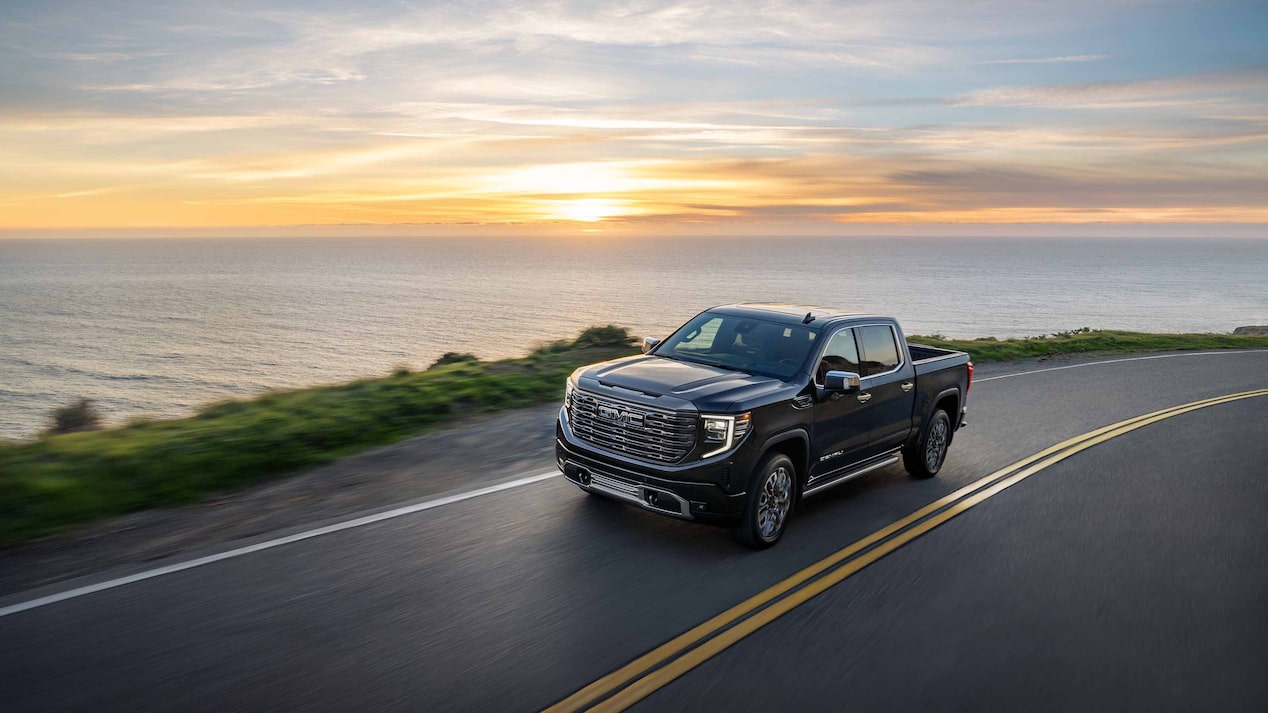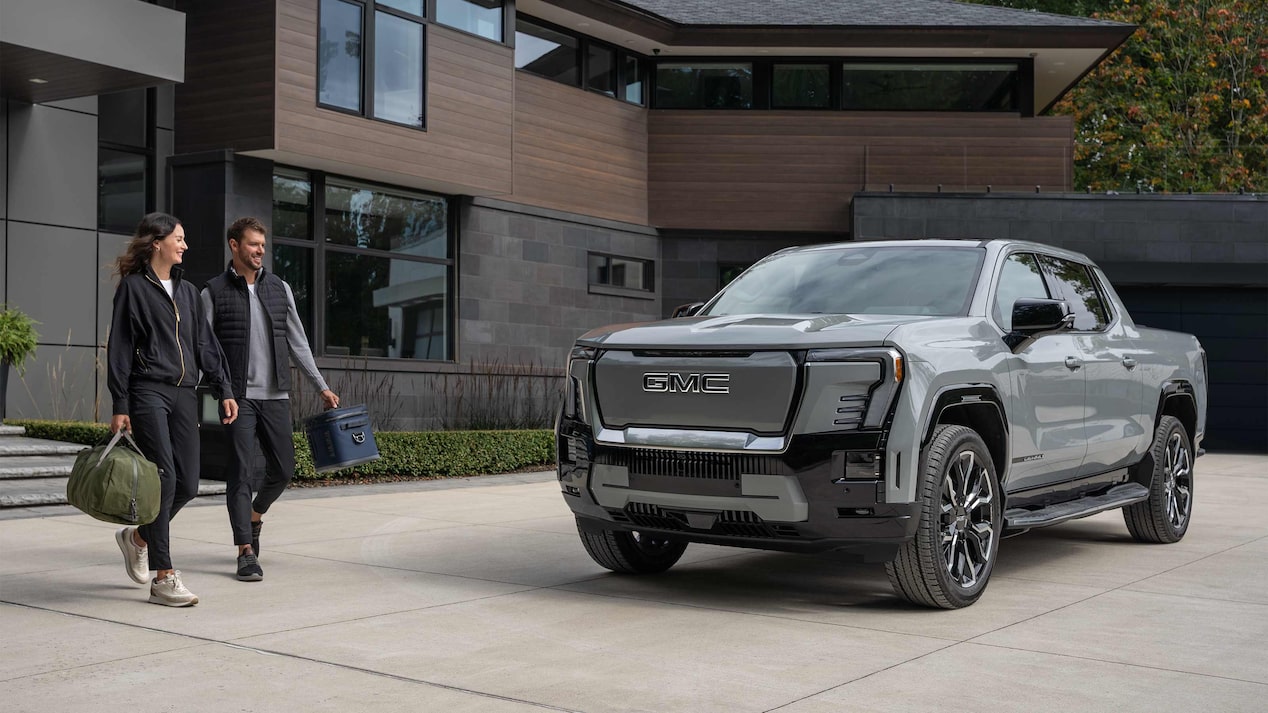GMC LIFE
Four-wheel drive can be a valuable asset when roads turn slippery – but only when you know how to properly utilize it.

When facing a snowed-over driveway, a loose gravel road, or another slippery road surface, four-wheel drive can be a valuable asset. Four-wheel drive systems, like those available in the GMC Canyon, Sierra, and Yukon, can help increase traction by sending the engine’s power to all four wheels – but knowing how to properly utilize four-wheel drive is incredibly important, and can help you avoid damaging your vehicle.
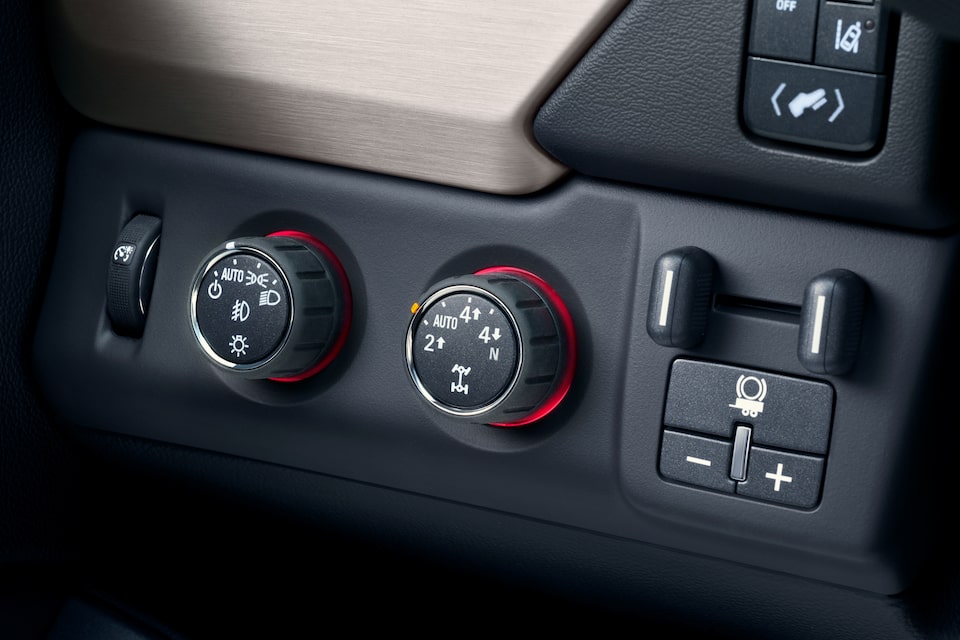
TWO-WHEEL DRIVE
For normal operation on paved roads, four-wheel drive GMC models should be operated as two-wheel drive vehicles to save wear on the 4WD components. If road conditions are optimal or there’s no loss of traction, the “2↑” position on the transfer should be utilized. In this setting, the transmission sends power into the transfer case, which then sends power only to the rear axle and rear wheels. Although not always optimal for traction, TWO-WHEEL DRIVE can be used on any road condition without risk of damaging your vehicle.
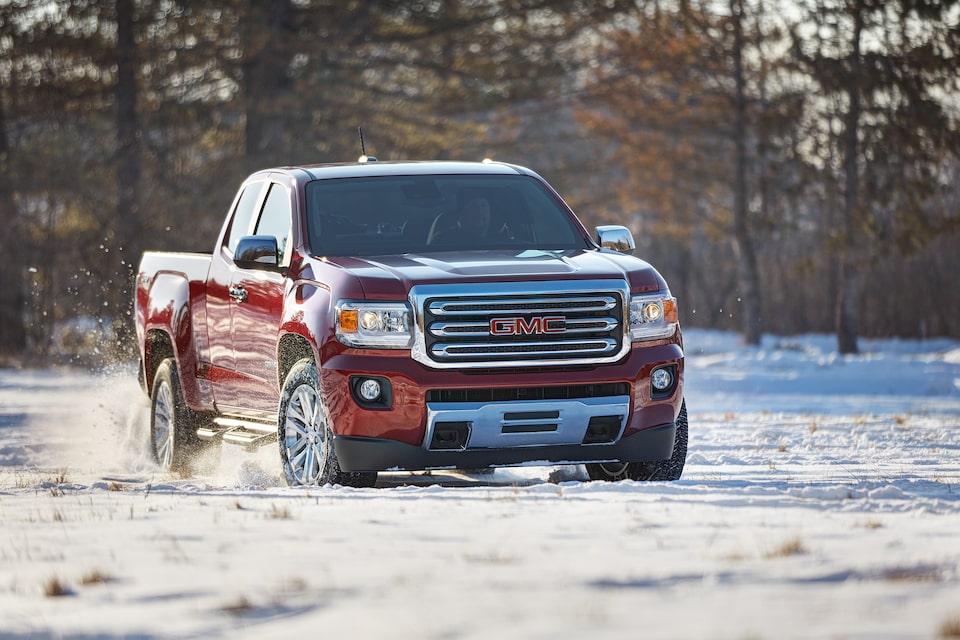
HIGH-RANGE FOUR WHEEL DRIVE
High-range four-wheel drive, marked as “4↑” on most transfer cases, is designed for use on loose or slippery surfaces. In this setting, the front axle is engaged, and the transfer case then sends power to both the front and rear axles and to all four wheels.
This mode forces the front and rear axles to spin at the exact same speed. Due to minor tire size differences and track length differences when turning, the front and rear axles can ‘fight’ against each other on high-friction surfaces and results in a condition sometimes known as ‘crow hop’ as tires are forced to slip to the ground.
Since GMC’s transfer cases are designed to be “shifted on the fly,” drivers can shift between high-range two-wheel drive and high-range four-wheel drive without bringing the vehicle to a halt. On electronic transfer cases, an indicator on the selector knob will flash while the shift is being performed and turn solid once it’s fully engaged. For trucks equipped with a manual transfer case, an indicator within the gauge cluster will illuminate.
It’s important to note that high-range four-wheel drive is not intended to be used on dry surfaces or roads with good traction. Doing so may place undue stress on axles, transfer cases, and other drivetrain components which could lead to damage. It’s important to remember to shift out of 4 HI as soon as road conditions improve.
AUTOMATIC 4 HI
If road conditions frequently alternate between high- and low-traction areas, consider using the “AUTO” setting found on select GMC electronic transfer cases. This setting allows your GMC to automatically distribute torque to the front axle by anticipating the need for additional traction. Shifting into “auto” engages the front axle, but the transfer case sends power primarily to the rear wheels in normal conditions and the clutches modulate torque forward to provide stability and enhance traction to the vehicle. Although not always optimal for efficiency and wear of your vehicle 4wd driveline, AUTOMATIC 4 HI can be used on any road condition without risk of damaging your vehicle.
LOW-RANGE FOUR WHEEL DRIVE
GMC models equipped with a two-speed transfer case also include a four-wheel drive setting known as “low range.” Typically marked as “4 ↓”, low range effectively doubles the torque sent to the wheels, making it useful for off-road driving in deep sand, mud, or snow. 4WD Low is important for severe off-roading to allow accurate control of vehicle speed over obstacles, and to provide effective engine braking on steep grades to save the brakes from overheating. Low range is meant predominantly for off-road situations, and should not be used at speeds above 45 mph.
Shifting into low-range four-wheel drive is a little more involved than shifting into high-range four-wheel drive. Drivers will need to shift the transmission into neutral to disconnect torque to allow the transfer case to shift gears. It is sometimes helpful on Manual Shift Transfer cases to keep the vehicle moving below 3-5 mph while shifting into 4 ↓ to allow the gears to align teeth. Once the transfer case is in low-range, shift the transmission back into drive. To shift out of low-range back to high range, follow the same procedures.
It’s important to note that Low-range four-wheel drive is not intended to be used on dry surfaces or roads with good traction. Doing so may place undue stress on axles, transfer cases, and other drivetrain components which could lead to damage. It’s important to remember to shift out of 4 Low as soon as road conditions improve.
For more information on how to use a four-wheel drive transfer case, refer to your GMC’s owner’s manual.
RELATED STORIES
HOW-TO
HOW-TO: PAIR YOUR BLUETOOTH DEVICE WITH GMC INTELLILINK

From placing calls to streaming music, smartphones and other mobile devices allow you to remain connected and entertained while on the go – and that includes within your GMC. The IntelliLink infotainment system to provides Bluetooth connectivity, giving you the ability to make hands-free calls or listen to your favorite playlist within your vehicle.
Here’s how you can connect your smartphone to your new GMC truck, SUV, or crossover.
TECHNOLOGY
GMC OFFERS ANDROID AUTO COMPATIBILITY

Whether it’s sending a message to family, searching for a new restaurant destination, or simply finding your way through traffic, your AndroidTM smartphone is an incredibly versatile and powerful tool. At GMC, we know the importance of staying connected on the go – which is why we’ve worked to implement Android Auto smartphone hands-free capability in many of our vehicles.
DESIGN & TECHNOLOGY
HOW TO CONNECT TO YOUR GMC’S WI-FI® HOTSPOT

A built-in Wi-Fi®









